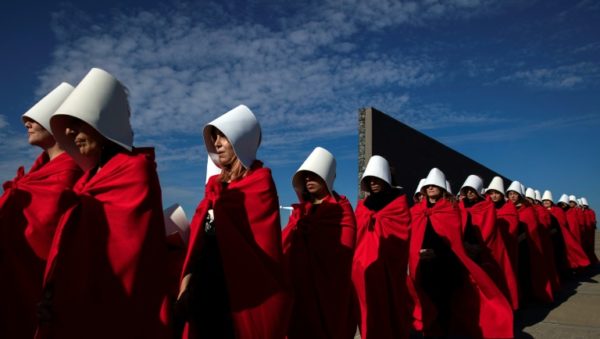Margaret Atwood unveils sequel to ‘The Handmaid’s Tale’


Published on 10.09.2019 at 14h54 by AFP
Margaret Atwood released the much-anticipated sequel to her award-winning 1985 novel “The Handmaid’s Tale” on Tuesday, with “The Testaments” set to become a similar smash.
A terrifying, misogynistic dystopia set in the US northeast in the near-future, “The Handmaid’s Tale” has been turned into a major television series and become a feminist rallying point for the #MeToo generation.
“It’s a question of things escaping from a book to the real world and the author has zero control,” Canadian author Atwood told a press conference in London.
Fans flocked to Waterstones’ flagship bookstore in Piccadilly, central London, where Atwood, 79, read from her new novel to around 400 avid followers who could get their hands on the book at midnight.
“It’s very accurate with what’s going (on) at the moment, where the world is heading and that’s kind of scary,” said 27-year-old Melisa Kumas, from the Netherlands but living in London, who wore a red handmaid’s outfit.
“It may be a bit of a warning to the people.”
The sequel has already been nominated for the 2019 Booker Prize, one of the English-speaking world’s most prestigious literary awards.
Its predecessor, which was nominated for the 1986 Booker Prize, was turned into a film in 1990, an opera in 2000, and an award-winning television drama series which first aired in 2017.
The show has boosted sales of the novel, which has shifted eight million copies worldwide in English alone.
– Novel set 15 years on –
In the original novel, the United States has become the Republic of Gilead, a totalitarian religious state where women are sexually subjugated.
More than 15 years on from the events of “The Handmaid’s Tale”, the oppressive theocratic regime maintains its grip on power but there are signs that it is beginning to rot from within.
“There are reasons with these kind of regimes to be optimistic because in fact they tend not to last,” said Atwood.
The lives of three radically different women converge in the novel.
Two, Agnes and Daisy, grew up in the first generation since the new order took over, while a third, Aunt Lydia, wields power through the ruthless accumulation and deployment of secrets.
Aunt Lydia was a character in “The Handmaid’s Tale”, while Agnes and Daisy also cropped up. They are the daughters of the first novel’s protagonist and narrator June, who goes under the handmaid name Offred.
When the new story begins, Agnes lives in Gilead, while her sister lives in neighbouring Canada and is appalled by the human rights abuses being perpetrated across the border.
But the third narrator in particular holds the reader in suspense: the Machiavellian leader of the Aunts — the group of women responsible for training and policing the handmaids.
The reader discovers her past as a free woman and her transformation into a monster through her survival instinct in the face of tyrannical men, and her aspiration for power to get her revenge.
– Feminist symbolism –
Atwood took more than three decades to create the sequel, inspired by questions asked by her readers about the characters in the first book.
The twist of events this century also spurred her into penning a sequel.
Atwood said society changed after the September 11, 2001 attacks, bringing in tighter domestic security measures, such as screening at airports.
“Once upon a time there was no security. We became more fearful,” she said.
Atwood said she was also influenced by the 2008 global financial crisis and US President Donald Trump’s election victory in 2016.
The TV adaptation has brought “The Handmaid’s Tale” to a new audience.
The handmaids’ white hats and red dresses have become a symbol of feminist struggles such as abortion and women’s rights campaigns in countries such as Argentina, Hungary, Ireland and Poland.
In the US, they have become an emblem of the anti-Trump and #MeToo movements.
“This wave started in Texas,” said Atwood, “as a protest tactic” in the legislature.
“You are not making a disturbance, you are sitting there modestly, you can not be kicked out for dressing up.”










0 Comments